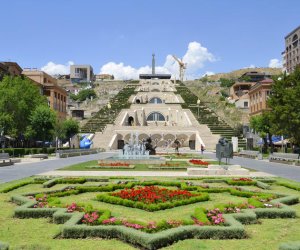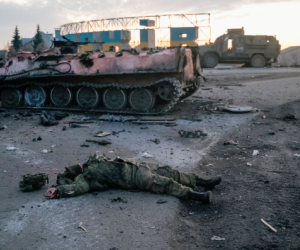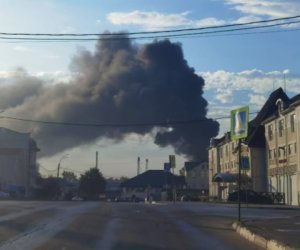Seven of the world’s riskiest roads - PHOTO

While some readers described routes that traverse one of the world’s coldest regions, or tunnels that only measure 4m wide, other respondents took our question to its limit, recommending roads that were not only interesting, but dangerous as well. In those cases, the roads are less frequented for a reason: read on for terrifying drop-offs, unpredictable mudslides and a complete lack of concrete paving.National Road 5, MadagascarFor National Road 5, which runs north-south between the towns of Maroantsetra (pictured here) and Soanierana-Ivongo on the African country’s east coast, “you need to hire both a driver and a mechanic,” said Anders Alm, chief technology officer for WAU, a travel agency that provides regular trips to the area. If you’re “bored of concrete”, he added, this drive – which he called “the worst road in the world” – would be one way to change it up.With sections of sand, solid rock and even worn-down bridges that drivers must inspect before crossing, the 200km road takes nearly 24 hours to drive. It turns especially treacherous during the rainy season (December to March), when the lack of asphalt or concrete paving leads the road to become impassable in many spots.The upside? Most of National Road 5 runs along the white sand coastline, providing spectacular views of palm tree forests and the Indian Ocean.Rohtang Pass, IndiaRohtang means literally, “pile of corpses” – a name that stems from the deadly mudslides that often cover the 4,000m-high road in the eastern Himalayas. Not to mention the area’s generally unpredictable weather, including snowstorms and sudden avalanches. “Each season, road crews use GPS to find the road and dig it out again,” said Witold Chrab, a Washington DC-based engineer who drove a motorcycle across the pass in 2011. Once cleared, the pass generally remains open from May to November – though snow can make it impassable at any time; in 2010 it left 300 tourists stranded. An 8km tunnel is being constructed beneath the pass to provide a safer option, but the original route, which connects the Kulu, Lahual and Spiti valleys in northernmost India, lures visitors with views of rugged mountain ranges, sprawling valleys and even a mountain goat or two. Transfăgărășan Road, RomaniaWhile well-known in the world of auto enthusiasts – its 90km of hairpin turns and dramatic descents earned it the title of “best road in the world” by the BBC Top Gear crew – fewer casual drivers know of Romania’s second-highest road. Built as a military route in case of an invasion in the 1970s, the road connects the two tallest mountains in the Southern Carpathians, Moldoveanu and Negoiu, and ascends a total of 2,034m in altitude.“If you like changing gears every three or four seconds, you know it's fun,” said Romanian native Razvan Baba. Even more fun? Nobody tends to be around to enforce the 40km/h speed limit, Baba said – though the hairpins make it tough to go much faster.Eyre Highway, AustraliaCarl Logan, a police officer from Perth, warned readers that this 684-mile stretch in southern Australia might seem “plain and boring” at first glance, but actually holds plenty of adventure – particularly with its animals. “You might see kangaroos, emus and sometimes even camels,” he said. The wildlife also makes the route riskier, as a wandering animal can seriously damage an oncoming car.The most dangerous time to take on the highway – which runs between the towns of Norseman and Ceduna – is dawn or dusk, when most wildlife attempts to cross the road. But those who do drive at nightfall will be rewarded. “Because there is no civilisation, the night stars will be the brightest you've ever seen,” Logan said.Prithvi Highway, NepalRunning 174km from Kathmandu to Pokhara past sights such as Annapurna, the 10th-tallest peak in the world, and its conservation area (pictured here), this road’s dramatic views come at a potentially high cost. “In addition to beautiful views of the Himalayas, you will see vehicles that have ended up in the river chasms,” said Janet M Foley, a Las Vegas resident who drove the route. Prithvi Highway also passes some of the country’s most important religious sites, including the sacred Manakamana Temple.Foley said the “joy ride” was well worth it one way – but decided to catch a plane back to Kathmandu rather than pressing her luck twice. Kolyma Highway, SiberiaLocals know the Kolyma Highway, or M56, as “Trassa” – simply “The Route” – because in this desolate, frozen region of eastern Siberia, it is the only main road. Another nickname for the highway, “the road of bones”, speaks to its tragic history: it was built by the hundreds of thousands of political prisoners who were exiled to the region’s gulags under the Stalin regime from the 1930s to the 1950s. Thousands were shot for not working hard enough, while others died from the gulags’ brutal conditions. The cold was another killer: with temperatures recorded as low as some -70C, the Kolyma is located in the world’s coldest inhabited area. Many of the dead simply were buried beneath the road’s foundations.After the road fell into disrepair for decades, actor Ewan McGregor and TV presenter Charlie Boorman took a motorcycle journey on it in 2004 for the TV show Long Way Round. Kolyma Highway was designated a federal road in 2008 and began to attract a band of particularly adventurous – and cold-loving – motorcycle enthusiasts. Today, the 2,031km route is still known as the “world’s coldest road”, said world traveller Filipp Peresadilo, with snow falling even in July and August. It also remains one of the most desolate, with few travellers knowing of the world’s most frozen road – or its tragic history.Guoliang Tunnel, ChinaFor decades, the tiny cliff top village of Guoliang, located in the Taihang Mountains of eastern China, was reachable only by climbing the mountain on foot. After the government refused to build a road, effectively leaving the village to become a ghost town, the locals decided to take matters into their own hands. From 1972 to 1977, they used explosives and shovels to dig their own 1.2km tunnel; some lost their lives in the process.Dangerous to build, the route is also dangerous to drive. Perched on the top of a cliff and measuring a narrow 4m wide, the Guoliang Tunnel is particularly treacherous after rains, when it can become very slippery. Thirty “windows” in the stone face, meanwhile, give spine-tingling glimpses of the valley far below. “China is the place to visit if you’re looking for extreme roads,” said Quora contributor Lewis Shaw. “Just don’t look down!”(BBC)Bakudaily.az




































 Photo
Photo 



 Video
Video 

